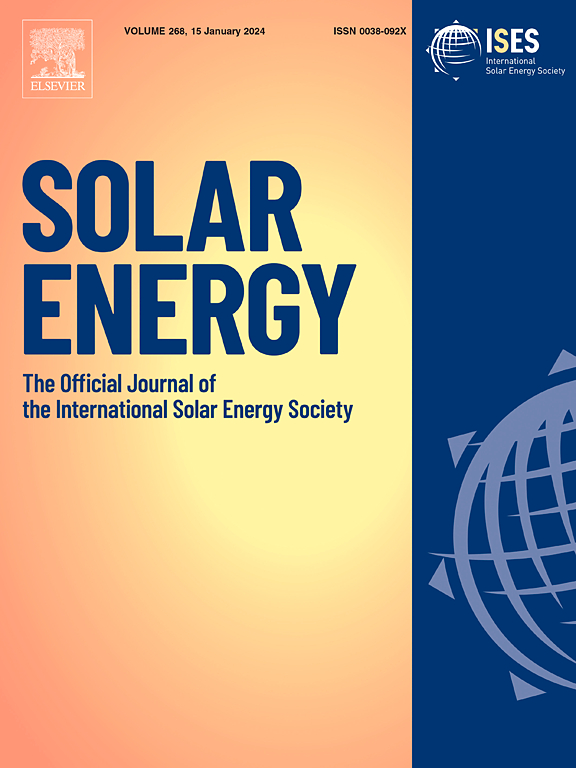SPICE simulation methodology to diagnose defects in upscaled Si/perovskite tandem solar cells
IF 6
2区 工程技术
Q2 ENERGY & FUELS
引用次数: 0
Abstract
As the power conversion efficiency (PCE) of Si solar cells has reached its limits, there is growing interest in Si/perovskite tandem solar cells to overcome the single junction efficiency limit. As for single-junction cells, the maximum efficiency of Si solar cells is constrained to 33 % according to the Shockley-Queisser limit. However, the theoretical limit of the PCE of double junction tandem solar cells based on a Si bottom cell is 45 %, which is 1.5 times greater than that of silicon cells, sparking an upsurge in research activity in this area. Large-area scaling is vital for the commercialization of tandem solar cells. However, the unevenly distributed electrical defects formed during this process poses a significant challenge in maintaining high efficiency on large area cells. In this study, we developed an electrical diagnosis methodology using PySPICE to simulate upscaled Si/perovskite tandem solar cells. The electrical circuits were arranged in a 2D array, constituting a two-dimensional distributed diode model, enabling the formulation of a unit cell and its subsequent scaling up to a large area. Using the simulator we developed, we investigated the influence of two kinds of typical electrical defects (open and shunt defects) on the device performances of upscaled Si/perovskite tandem solar cells (M10-size). The diagnosis methodology is expected to enable the retrospective tracing of the sources of efficiency reduction in upscaled large area tandem solar cells. The results from this study will lay the groundwork for a novel approach to analyzing the non-uniformity that arises when scaling up Si/perovskite tandem solar cells to a large area.
基于SPICE模拟方法的硅/钙钛矿串联太阳能电池缺陷诊断
随着硅太阳能电池的功率转换效率(PCE)已经达到极限,人们越来越关注硅/钙钛矿串联太阳能电池,以克服单结效率的限制。对于单结电池,根据Shockley-Queisser极限,硅太阳能电池的最大效率被限制在33%。然而,基于硅底电池的双结串联太阳能电池的PCE理论极限为45%,是硅底电池的1.5倍,这引发了该领域的研究热潮。大面积规模化对串联太阳能电池的商业化至关重要。然而,在此过程中形成的不均匀分布的电缺陷对在大面积电池上保持高效率提出了重大挑战。在这项研究中,我们开发了一种电气诊断方法,使用PySPICE来模拟升级的Si/钙钛矿串联太阳能电池。电路以二维阵列排列,构成二维分布式二极管模型,使单位电池的形成和随后的扩大成为可能。利用所开发的模拟装置,研究了两种典型的电气缺陷(开路缺陷和分流缺陷)对m10级硅/钙钛矿串联太阳能电池器件性能的影响。该诊断方法有望使大规模串联太阳能电池效率降低的追溯溯源成为可能。这项研究的结果将为分析硅/钙钛矿串联太阳能电池大面积放大时出现的不均匀性的新方法奠定基础。
本文章由计算机程序翻译,如有差异,请以英文原文为准。
求助全文
约1分钟内获得全文
求助全文
来源期刊

Solar Energy
工程技术-能源与燃料
CiteScore
13.90
自引率
9.00%
发文量
0
审稿时长
47 days
期刊介绍:
Solar Energy welcomes manuscripts presenting information not previously published in journals on any aspect of solar energy research, development, application, measurement or policy. The term "solar energy" in this context includes the indirect uses such as wind energy and biomass
 求助内容:
求助内容: 应助结果提醒方式:
应助结果提醒方式:


